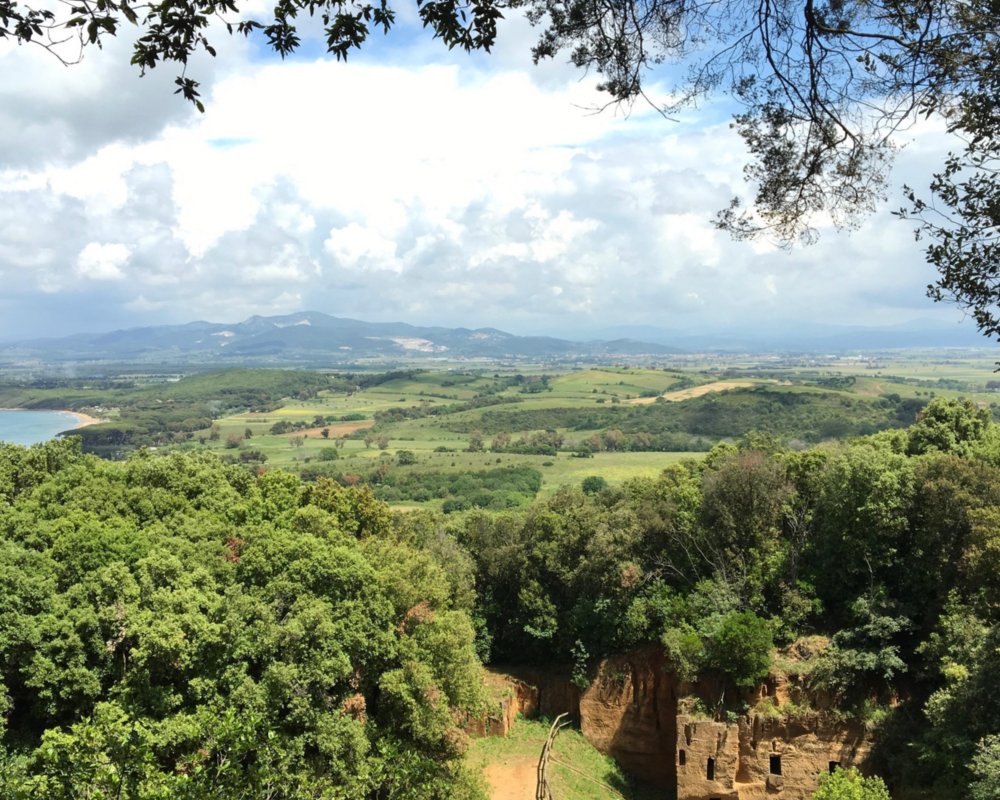A journey through history and archaeology, a stone's throw from the sea
Nature and archaeology in the open air: this is only a small part of what the Val di Cornia, the southern region of the unmistakable Etruscan Coast, can offer to tourists. Throughout this area, facing out onto the clear sea, we spot things of historical and cultural interest, parks and well-known thermal hotspots.
Val di Cornia is also the ideal place to visit with children, as the green hills will form a backdrop to the family's adventures and archaeological discoveries. What are you waiting for? Follow us!
Our journey begins in the Baratti and Populonia Archaeological Park as we go to discover the richness of Etruscan civilisation. Populonia is the biggest Etruscan city that looks out over the sea, and it was known in ancient times as Fufluna (derived from Fufluns, the Etruscan god of wine) or, alternatively, Pupluna.
The ruins and the necropolis testify to the glorious past of these ancient people, which will fascinate children and adults alike. You can follow the woodland hiking route to explore burial mounds, caves, and what remains of temples, baths and sanctuaries.
On the road, you can stop in one of the designated rest areas for a picnic or a packed lunch and let the children run around. You can rejoin the route any time and enjoy some magnificent panoramic vantage points that open up onto the Isola d’Elba and the Tuscan Archipelago.
After a morning of history, you can relax in the afternoon on the silvery beach of Baratti or in the nearby pinewood. Here you can spend the last hours of daylight and gaze at the golden sunset that falls upon the sea.
Our journey begins in the Baratti and Populonia Archaeological Park as we go to discover the richness of Etruscan civilisation. Populonia is the biggest Etruscan city that looks out over the sea, and it was known in ancient times as Fufluna (derived from Fufluns, the Etruscan god of wine) or, alternatively, Pupluna.
The ruins and the necropolis testify to the glorious past of these ancient people, which will fascinate children and adults alike. You can follow the woodland hiking route to explore burial mounds, caves, and what remains of temples, baths and sanctuaries.
On the road, you can stop in one of the designated rest areas for a picnic or a packed lunch and let the children run around. You can rejoin the route any time and enjoy some magnificent panoramic vantage points that open up onto the Isola d’Elba and the Tuscan Archipelago.
After a morning of history, you can relax in the afternoon on the silvery beach of Baratti or in the nearby pinewood. Here you can spend the last hours of daylight and gaze at the golden sunset that falls upon the sea.
We now head in the direction of Campiglia Marittima, where we will pass the second day of the weekend. The children will go mad with joy at the sight of the little train in the San Silvestro Archaeological Mines Park. Here you can learn the history of the mineral industry that underpinned Val di Cornia's economy from around the year 1000 C.E. A visit to the Temperino mine will show you the extraction process of the minerals and the subsequent stages of work.
You should also see the Rocca San Silvestro, the historic village of miners and foundrymen founded to exploit the seams of copper and lead in the area. To get there, you just need to follow a hiking route of around twenty minutes from Valle Lanzi.
Tired of walking through underground tunnels? Go back up to the surface and treat yourself to a tasty break in a wine bar, sampling the typical wines and cheeses of Val di Cornia.
We now head in the direction of Campiglia Marittima, where we will pass the second day of the weekend. The children will go mad with joy at the sight of the little train in the San Silvestro Archaeological Mines Park. Here you can learn the history of the mineral industry that underpinned Val di Cornia's economy from around the year 1000 C.E. A visit to the Temperino mine will show you the extraction process of the minerals and the subsequent stages of work.
You should also see the Rocca San Silvestro, the historic village of miners and foundrymen founded to exploit the seams of copper and lead in the area. To get there, you just need to follow a hiking route of around twenty minutes from Valle Lanzi.
Tired of walking through underground tunnels? Go back up to the surface and treat yourself to a tasty break in a wine bar, sampling the typical wines and cheeses of Val di Cornia.


